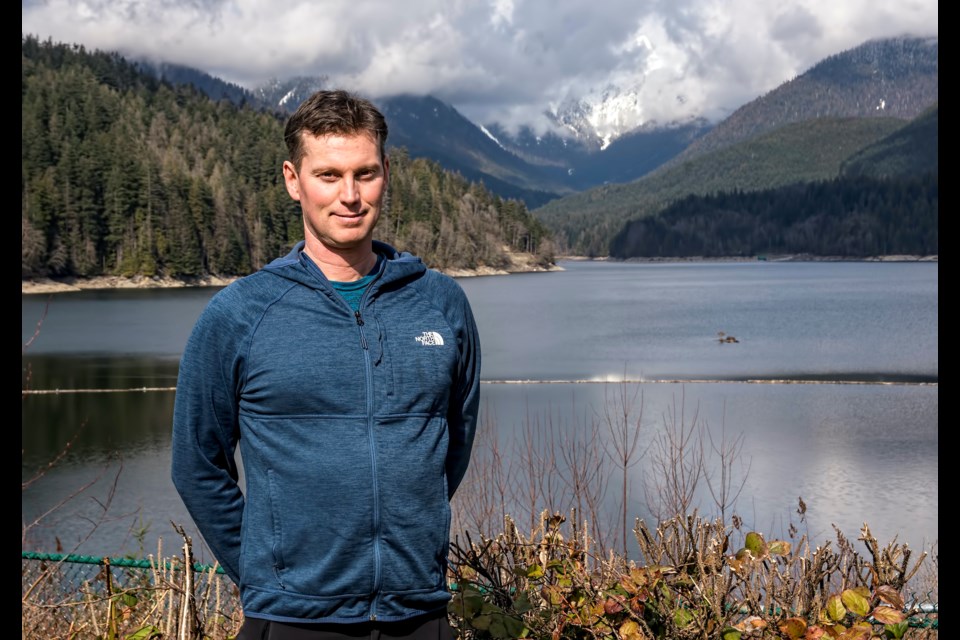More lawn watering restrictions and cloudy drinking water could be on tap for the Lower Mainland in the decades to come if extreme weather patterns continue to impact reservoirs adversely, says a Metro Vancouver field hydrologist.
On March 15, Peter Marshall, a Metro Vancouver regional government field hydrologist, presented a report on how extreme weather has accelerated a re-think in water resource management.
"I would say that there's been a series of wake-up calls over the last several years, in terms of anomalous weather events or unusual weather events," Marshall told Glacier Media. "Obviously, the heat dome in 2021 was really eye-opening. It was probably considered the most anomalous extreme heat event anywhere in the world at this point."
"Many people will then say, 'Well, it's not likely we're going to see such an unusual event happen again, right on the back of that,' but last year — 2022 — the drought was almost equally as unusual in just how warm and dry it was well into the fall," explained Marshall.
Although the South Coast receives lots of rain and snow annually, Marshall says the timing of it is crucial.
"What we are seeing is longer, drier, hotter summers, and then more precipitation in the fall and winter months. And then, of course, with warming temperatures, more precipitation in the winter months will not necessarily mean more snow; in fact, it will probably mean less snow to refill our reservoirs in the late spring and summer months," said Marshall.
A 27-day dry spell last year stretched from late September into October. It's usually around this time that Metro Vancouver lifts lawn-watering restrictions as storms return.
Marshall said we should expect more such droughts.
More troubling, he added, is that the region's residents cannot always depend on a deep snowpack to get them through extended summer and fall droughts.
In 2022, the spring was "persistently cool and wet," noted Marshall, as rain fell on 63 of 82 days between April 1 and June 21. By mid-June, the snowpack was 180 per cent greater than usual. And so, people weren't bothered by the fall drought when filling their cups with water at home.
But Marshall's report also notes communities that do not rely on snowpack melt are at greater risk — such as the Sunshine Coast, where a state of emergency was called last summer due to the drought.
"The worst case scenario would be to have a drought extended into the fall, like we did last year, with very little or no mountain snowpack to begin with, which was our saving grace last year. So with that in mind, of course, water services are looking closely at that and planning accordingly," said Marshall.
The challenge is in precipitation patterns — not rainfall amounts
Then there are the atmospheric rivers — more intense rain storms that batter the South Coast. Such storms caused flash floods in the Fraser Fraser in 2021, following the infamous "heat dome" that summer.
Climate change projections used by Marshall's department show the region will experience only modest overall precipitation changes. The challenge is in how the precipitation falls.
Having lots of rain in short periods makes water planning more difficult, said Marshall.
"These atmospheric rivers that hit us in the winter, in the fall months, I think the biggest challenge we have with those, obviously, is we can't capture and hold on to that water. But it's also a water quality issue, where we have the potential for landslides events in our water supply areas, and that creates turbid water, which can be challenging for delivering clean water," said Marshall.
Effects of warmer temperatures on local reservoirs, Coquitlam Glacier
The next issue is warmer temperatures, which will melt more snow in the spring and lead to more depleted reservoirs by summer. Marshall said a warm spring coupled with an extended drought like last year could prompt more serious water restrictions.
Warmer temperatures also evaporate water from reservoirs more quickly, melting the watershed's last glacier — the Coquitlam Glacier.
"The results show that this small glacier has decreased in area by 20 per cent since 2014 and has lost an average depth of just over 10 metres. As glaciers get smaller, their melt rate tends to increase; however, the Coquitlam Glacier has seen a five-fold increase in melt rates since 2018, which is much greater than normal. This glacier will likely disappear completely within the next 20 to 30 years," notes Marshall's report.
Metro Vancouver taps into three dammed reservoirs to serve residents: Capilano, Seymour and Coquitlam.
So far, solutions to handle unexpected fluxes in water levels are in a nascent stage, aside from a more definitive plan to expand the Coquitlam reservoir in the coming decade, said Marshall.
"Beyond that, I think there have been many discussions about adding more capacity, more source water, whether it's looking at sub-alpine lakes in our watershed areas or expanding existing reservoirs. But there's nothing concrete at this point. There's just a bunch of potential options on the table," said Marshall.
He said that extreme measures, such as in California, where water canals and reservoirs can be covered in plastic shade balls to preserve water, are not likely to occur here.
"I don't think we're at the point where we'll see, you know, year-round extreme drought, like they have seen in California, at least not for many, many years," said Marshall.
"Our climate change projections are suggesting that we might have dry spells in the summer that extend from an average of 21 days up to an average of 27 days," said Marshall.
His report also touched on such droughts impacting forests and the likelihood of more fires in the region, such as the one at Minnekhada Regional Park last October. In the coming years, atmospheric rivers will also challenge local municipalities with flash floods inland and ont he coast due to King tides.




